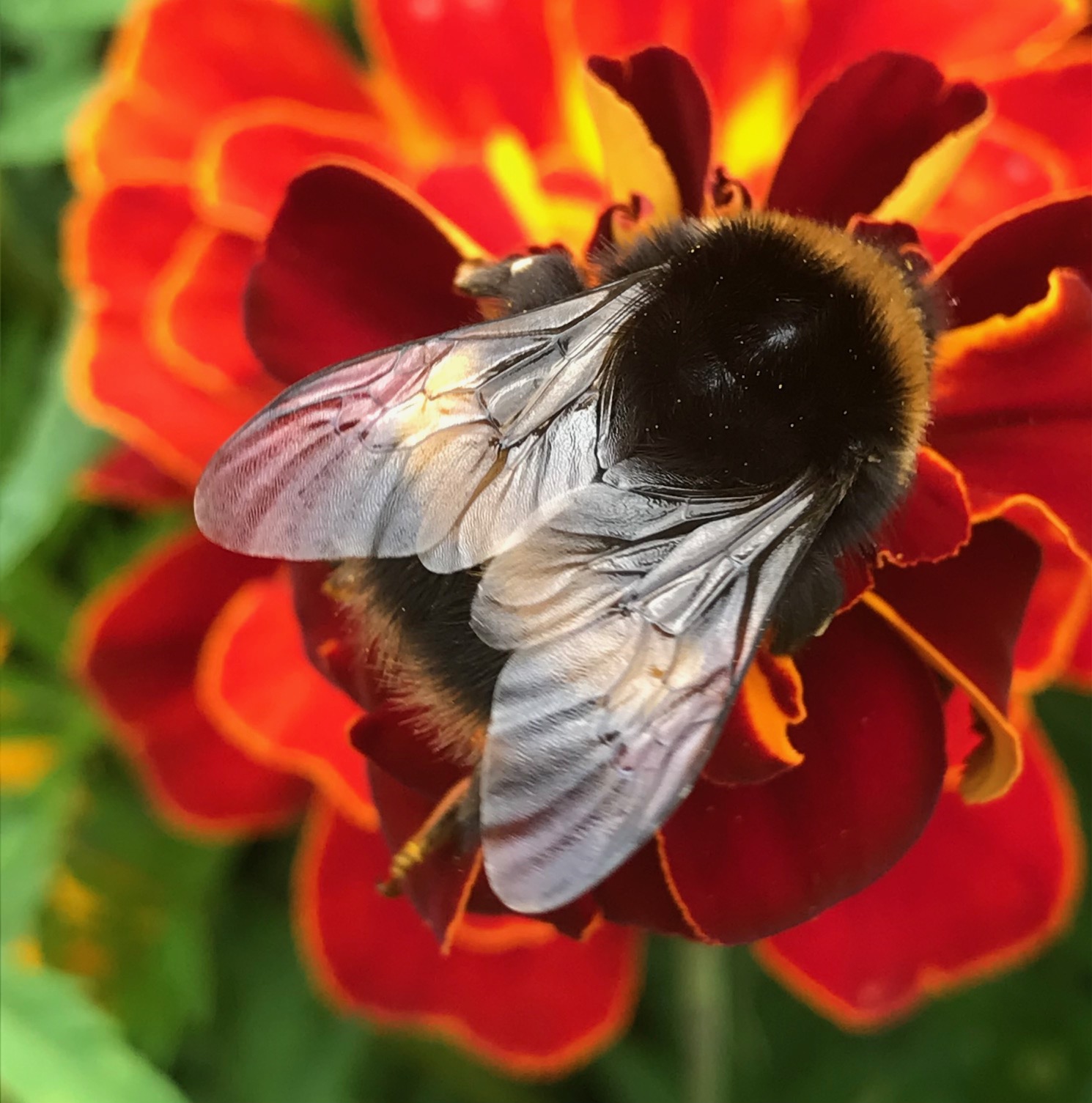One of the ways to distinguish a bee from a fly is that all bees have four wings, or two pairs of wings, whereas flies (known correctly as diptera) have just one pair of wings. Look closely at the insect before you and try and see whether there is a smaller pair of wings hooked behind the main pair? Four wings means it is a bee. Two wings and you’ve got a fly. Bees also tend to wear their wings folded back on their bodies when resting, whereas flies hold them out like aeroplanes.
Buzzy bees
Bee wings are very intricate, they are covered in veins in specific patterns. When identifying bees sometimes it is the patterns of the wing veins that differentiates between different species.
The flying muscles of a bee are very powerful. Bumblebees can detatch their wing muscles and vibrate their bodies. Queen bumblebees do this when they are incubating their first brood of eggs. The vibration raises the temperature of their bodies and helps hatch the eggs, much in the same way that a broody hen will sit on her eggs.
Buzz pollination
Worker bumblebees also use a similar technique when getting the pollen from certain flowers. The anthers of tomato plants actually hold on tightly to their pollen. To release the pollen grains (the protein rich food that bees feed to their babes) the worker bumblebee grabs hold of the anthers and detatches her wing muscles and vibrates. The higher frequency releases the pollen and the bee gains her prize. Sometimes you can hear a high pitched buzzing from certain garden flowers, like roses and poppies. It sounds like the bee is trapped inside, but actually it is the bee vibrating to release the pollen. This technique is called Buzz Pollination or Sonication.

Leave a Reply